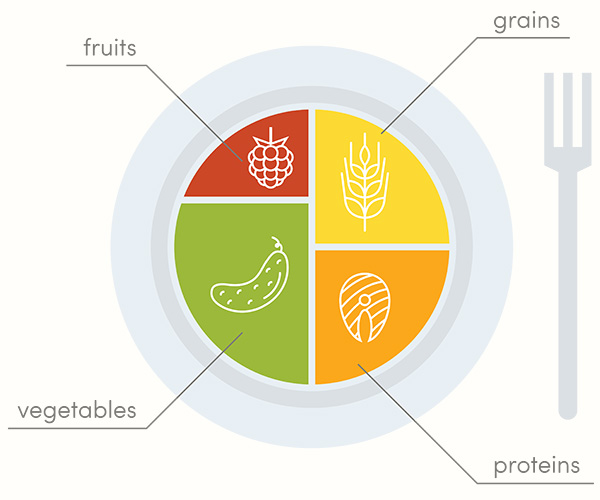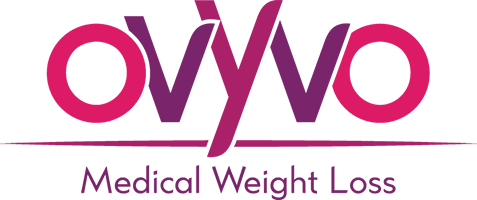Starting a weight loss journey can feel daunting – especially if you haven’t committed to it before. But with the right approach, losing weight is entirely achievable. Learning how to start losing weight for beginners is the first step.
Excess weight and obesity is a significant health concern in our country. In fact, 73.6% of adults (age 20 or older) in the U.S. are either overweight or obese, with obesity affecting about 41.9% of adults (age 20 or older).
This condition is linked to various health issues, including heart disease, diabetes, and certain cancers, shortening the average American life expectancy by three to ten years. According to the CDC, losing just 5-10% of body weight can significantly improve health outcomes, including lowering blood pressure, cholesterol levels, and blood sugar levels.
However, many people face challenges when trying to lose weight. The sheer volume of information out there can be confusing, with new trends and fad diets promising quick results but often failing to deliver sustainable outcomes. It’s easy to get lost in the hype and misinformation. And that can leave anyone feeling frustrated and discouraged.
This guide is designed to cut through the noise and provide a proven starting point for any successful weight loss journey. By focusing on fundamental principles of healthy living, this guide will help you set realistic goals, adopt balanced eating habits, incorporate enjoyable exercises, manage sleep and stress, and track your progress effectively. With dedication and patience, you’ll be on your way to a healthier, happier you!
Step 1: Setting Realistic Goals
One of the most important steps in learning how to start losing weight for beginners is setting realistic and achievable goals. Without clear goals, it’s easy to lose direction and motivation. Start with SMART goals, which are Specific, Measurable, Attainable, Relevant, and Time-bound.
For example, instead of a vague goal like “I want to lose weight,” set a more specific goal such as “I aim to lose 1-2 pounds per week by incorporating more vegetables into my diet and exercising three times a week.”
(S) Specific (Define Clear Targets): Specify what you want to achieve. For example, “I want to lose 5 pounds per month over the next 12 months.”
(M) Measurable (Track Your Progress): Use tools like a food diary, fitness tracker, or apps to measure your progress. This can include tracking weight, body measurements, and physical activity.
(A) Attainable (Set Realistic Goals): Ensure your goals are achievable. Losing 1-2 pounds per week is a healthy and realistic target. Setting overly ambitious goals can lead to frustration and burnout.
(R) Relevant (Align with Personal Motivations): Your goals should be important to you and align with your personal motivations, whether it’s improving health, gaining more energy, or feeling more confident.
(T) Time-bound (Set a Deadline): Having a time frame creates a sense of urgency and helps keep you focused. For instance, “I aim to lose 10 pounds by the end of the next three months.”
Additional Tips for Goal Setting:
- Break Down Large Goals: Divide larger goals into smaller, manageable tasks. For example, if your goal is to lose 50 pounds, break it down into five 10-pound increments.
- Celebrate Milestones: Recognize and reward yourself for reaching milestones along the way. This could be treating yourself to a new workout outfit or a relaxing spa day.
Set goals that are challenging yet realistic. Small, consistent changes lead to lasting results.
Step 2: Healthy Eating Habits
Adopting healthy eating habits is crucial when understanding how to start losing weight for beginners. What you eat and how you eat can significantly impact your progress. It’s not just about cutting calories but about nourishing your body with the right balance of nutrients to support your overall health.
Balanced Diet
Eating a balanced diet is crucial. This means incorporating a variety of foods to ensure your body gets all the essential nutrients it needs. Focus on lean proteins, whole grains, fruits, vegetables, and healthy fats. A balanced diet helps you feel fuller longer and provides the energy you need for your day’s activities plus exercise.
- Lean Proteins: Include sources like chicken, turkey, fish, tofu, and legumes.
- Whole Grains: Choose whole grains such as brown rice, quinoa, oats, and whole wheat bread.
- Fruits and Vegetables: Aim to fill half your plate with fruits and vegetables. They are low in calories and high in fiber, which aids in digestion and keeps you feeling full.
- Healthy Fats: Incorporate sources like avocados, nuts, seeds, and olive oil.

Portion Control
Portion control is another key aspect of healthy eating. Using smaller plates can help you eat smaller portions without feeling deprived. Mindful eating practices, such as paying attention to hunger cues and eating slowly, can also prevent overeating.
- Use Smaller Plates: This simple trick can help you eat less while still feeling satisfied.
- Mindful Eating: Pay attention to what you’re eating and savor each bite. Avoid distractions like watching TV while eating.
Reducing Processed Foods and Sugary Drinks
Minimizing processed foods and sugary drinks is essential for weight loss. Processed foods often contain high levels of added sugars, unhealthy fats, and sodium, which can contribute to weight gain. Instead, choose whole foods and healthier alternatives.
- Processed Foods: Reduce intake of snacks, fast foods, and pre-packaged meals.
- Sugary Drinks: Cut down on soda, sweetened teas, and juices. Choose water, herbal teas, or sparkling water with a splash of lemon or lime.
Step 3: Hydration
Staying hydrated is a fundamental aspect of losing weight. Water plays a crucial role in maintaining bodily functions, aiding digestion, and supporting metabolism. Often, our bodies can confuse thirst with hunger, leading to unnecessary snacking. Ensuring you drink enough water can help prevent this and support your overall health.
Importance of Hydration
Water is essential for numerous bodily functions:
- Regulates Body Temperature: Helps maintain normal body temperature.
- Lubricates Joints: Keeps joints lubricated, reducing discomfort during physical activities.
- Aids Digestion: Helps break down food and absorb nutrients more efficiently.
- Removes Waste: Facilitates the elimination of waste through urine, sweat, and bowel movements.
Daily Water Intake
The amount of water you need can vary based on several factors, including age, weight, activity level, and climate. A general guideline is to drink at least 8 glasses (64 ounces) of water a day, but you might need more if you’re active or if the weather is hotter.
Tips for Increasing Water Intake
- Carry a Water Bottle: Keep a reusable water bottle with you to encourage regular sipping throughout the day.
- Infuse Your Water: Add slices of lemon, cucumber, or mint to your water for a refreshing taste without added sugars.
- Set Reminders: Use phone alarms or apps to remind you to drink water regularly.
Step 4: Exercise for Beginners
Incorporating regular physical activity into your routine is essential when learning how to start losing weight for beginners. Exercise helps burn calories, build muscle, and boost your metabolism. For beginners, it’s important to start with activities that are enjoyable and manageable to build a sustainable exercise habit.

Finding Enjoyable Activities
Choosing exercises you enjoy increases the likelihood that you’ll stick with them. The key is to find activities that are fun and fit your lifestyle.
- Walking: A simple, low-impact exercise that you can do anywhere. It’s a great way to start building your fitness.
- Swimming: Offers a full-body workout without putting stress on your joints.
- Dancing: Fun and energetic, dancing can be a great cardio workout.
- Yoga: Improves flexibility and strength while also providing mental relaxation.
Starting Small and Building Consistency
It’s crucial to start with small, manageable exercise routines and gradually increase intensity and duration as your fitness improves.
- Begin with Short Sessions: Start with 10-15 minute sessions and gradually work your way up to 30 minutes or more.
- Increase Intensity Gradually: As you become more comfortable, increase the intensity of your workouts by adding more challenging exercises or increasing the duration.
- Consistency is Key: Aim to exercise regularly, ideally 3-5 times a week, to build a sustainable habit.
Combining Cardio and Strength Training
A well-rounded exercise routine should include both cardiovascular exercises and strength training.
- Cardio Exercises: Activities like brisk walking, running, biking, and swimming help burn calories and improve heart health.
- Strength Training: Helps build muscle, which can increase your metabolism. Examples include bodyweight exercises like squats and push-ups, as well as weightlifting.
Step 5: Sleep and Stress Management
Getting enough sleep and managing stress are crucial for weight loss and overall health. Both play a significant role in how your body regulates hunger, stores fat, and uses energy. Poor sleep and high stress levels can hinder your weight loss efforts by affecting your hormones and increasing cravings for unhealthy foods.
Importance of Sleep
Quality sleep is essential for maintaining optimal health. Adults should aim for 7-9 hours of sleep per night.
- Hormone Regulation: Sleep helps regulate hormones like leptin and ghrelin, which control hunger and fullness.
- Energy Levels: Adequate sleep improves your energy levels, making it easier to stay active and stick to your exercise routine.
- Mental Health: Good sleep supports mental well-being, reducing stress and improving mood.
Tips for Better Sleep
- Establish a Routine: Go to bed and wake up at the same time every day, even on weekends.
- Create a Sleep-Friendly Environment: Keep your bedroom cool, dark, and quiet. Use blackout curtains and consider white noise machines if necessary.
- Limit Screen Time: Avoid spending too much time looking at your phone, tablet, TV, or other screen. While the most recent studies, like this one, suggest that the “blue” light these devices emit don’t actually have a measurable effect on sleep, they do serve as a powerful distraction.
Managing Stress
Chronic stress can lead to weight gain by increasing the production of cortisol, a hormone that promotes fat storage, especially around the abdomen.
- Practice Relaxation Techniques: Techniques like deep breathing, meditation, and yoga can help reduce stress levels.
- Stay Active: Physical activity is a great way to manage stress and improve your mood.
- Connect with Others: Spending time with friends and family or joining a support group can provide emotional support and reduce stress.
Step 6: Tracking Progress
Tracking your progress is vital to staying motivated and making adjustments to your weight loss plan as needed. Monitoring different metrics can provide a comprehensive view of your journey and help you recognize your achievements, even when the scale doesn’t move.
Food and Activity Tracking
Keeping track of what you eat and your physical activities can help you stay accountable and make healthier choices.
- Food Diary: Writing down everything you eat can help you become more aware of your eating habits and identify areas for improvement. This can be done in a journal or through apps like MyFitnessPal, MyNetDiary or LoseIt!
- Activity Log: Record your physical activities, including the type of exercise, duration, and intensity. This helps ensure you’re getting a balanced mix of cardio and strength training.
Other Metrics to Track
In addition to tracking food intake and exercise, monitoring other metrics can provide a more complete picture of your progress.
- Body Measurements: Take regular measurements of your waist, hips, thighs, and arms. This can help you see changes in your body composition that the scale might not reflect.
- Progress Photos: Taking photos of yourself at regular intervals (e.g., monthly) can visually document your transformation and keep you motivated.
- Non-Scale Victories: Celebrate improvements in how your clothes fit, increased energy levels, better sleep, and enhanced mood.
Importance of Non-Scale Victories
It’s easy to get discouraged if the scale isn’t moving as quickly as you’d like. However, many positive changes happen beyond weight loss, known as non-scale victories.
- Improved Fitness Levels: Noticeable improvements in endurance, strength, and overall fitness.
- Better Mood: Enhanced mood and mental clarity as a result of regular exercise and healthy eating.
- Increased Energy: More energy to tackle daily tasks and enjoy activities you love.
Example Progress Tracking Routine:
- Weekly: Weigh yourself and log your food intake and physical activity.
- Monthly: Take body measurements and progress photos. Reflect on non-scale victories and celebrate your achievements.
Step 7: Seeking Professional Guidance
Seeking professional guidance can provide you with a personalized strategy, the right tools and/or medication solutions, and ongoing support, making your weight loss journey more effective and sustainable. Professionals can offer tailored recommendations based on your individual needs, medical history, and lifestyle.
Dietitians and Nutritionists
Working with a dietitian can help you understand the nutritional needs specific to your body and lifestyle, leading to sustainable weight loss and improved overall health.
- Personalized Nutrition Plan: Dietitians and nutritionists can create customized nutrition plans that cater to your dietary preferences, health conditions, and weight loss goals.
- Nutritional Education: They provide education on healthy eating habits, portion control, and how to read food labels, helping you make informed food choices.
- Accountability: Regular check-ins with a dietitian or nutritionist can help you stay on track and make necessary adjustments to your diet.
Personal Trainers
A personal trainer can help you build a balanced exercise routine that includes both cardio and strength training, making your workouts more effective and enjoyable.
- Customized Workout Plans: Personal trainers design workout routines tailored to your fitness level, goals, and any physical limitations you may have.
- Motivation and Support: They provide motivation, support, and encouragement, helping you stay committed to your exercise routine.
- Proper Technique: Personal trainers ensure you use the correct form and technique during exercises, reducing the risk of injury and maximizing effectiveness.
Healthcare Providers
Consulting with a healthcare provider ensures that your weight loss plan is safe and effective, particularly if you have conditions like diabetes or hypertension.
- Medical Supervision: Healthcare providers, such as doctors and specialists, can monitor your progress, especially if you have underlying health conditions that require medical attention.
- Health Assessments: They can perform health assessments and tests to determine any potential issues that might affect your weight loss journey.
- Medication and Treatments: In some cases, healthcare providers like us may prescribe medication or recommend treatments that can assist with weight loss. This may include popular and effective GLP-1 medications like semaglutide or tirzepatide.
How to Find the Right Professional
- Credentials and Experience: Look for professionals with relevant qualifications, certifications, and experience in weight loss and nutrition.
- Referrals and Reviews: Ask for recommendations from friends, family, or your primary care physician. Check online reviews to gauge others’ experiences.
- Consultation: Schedule initial consultations to discuss your goals and see if the professional is a good fit for your needs.
Final Thoughts On How To Start Losing Weight for Beginners
Starting a weight loss journey can be daunting, but understanding how to start losing weight for beginners with the right strategies and support, you can achieve your goals. Remember to set realistic goals, adopt healthy eating habits, stay hydrated, incorporate enjoyable exercises, prioritize sleep and stress management, track your progress, and seek professional guidance. Every small step you take brings you closer to a healthier, happier you.
Are you ready to take the next step in your weight loss journey? Contact us today to schedule a consultation or visit our clinic. Our team of experienced professionals is here to support you every step of the way.
Let us help you achieve your weight loss goals and improve your overall health. Call 1-888-WTLOSS1 or Schedule an Appointment!
Disclaimer: This content is for informational purposes only and is not intended as medical advice, diagnosis, or treatment. Always seek the advice of your physician or other qualified health provider with any questions you may have regarding a medical condition or before making any changes to your diet or exercise program.
